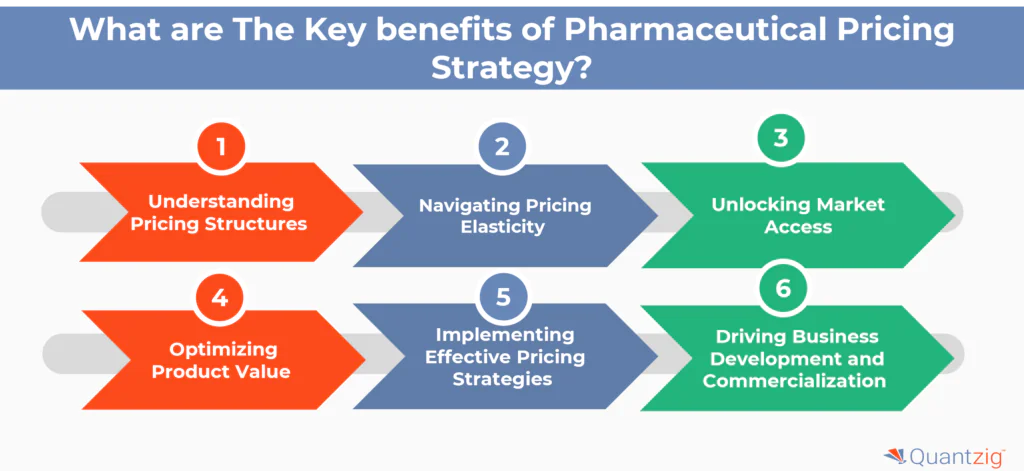Trick Variables to Take Into Consideration When Crafting Your Pricing Strategy
Trick Variables to Take Into Consideration When Crafting Your Pricing Strategy
Blog Article

Master Effective Pricing Strategies to Make Best Use Of Earnings
In the ever-evolving landscape of commerce, grasping efficient rates strategies is important for services aiming to take full advantage of profit. A nuanced understanding of rates psychology can dramatically affect consumer habits and getting decisions.
Understanding Prices Psychology
Understanding pricing psychology is important for organizations aiming to maximize their prices methods. This field takes a look at exactly how consumers view rates and exactly how these assumptions affect their investing in choices. Key principles in pricing psychology consist of the anchoring result, where the preliminary price offered works as a reference factor for customers, and the idea of cost sensitivity, which differs among various consumer sections.
In addition, businesses can take advantage of the idea of perceived value, where the perceived advantages of a product and services can justify a higher rate factor. Premium pricing can produce a mood of exclusivity, attracting consumers that connect greater prices with exceptional quality. On the other hand, emotional rates, such as establishing a rate at $9.99 rather than $10, can considerably impact consumer habits by making costs appear much more appealing.
Moreover, shortage and urgency can boost the viewed value of items, motivating quicker purchasing choices. Recognizing these mental triggers allows organizations to create rates strategies that not just drive sales but also foster customer commitment. Therefore, grasping prices psychology is necessary for efficient rates method formulation, causing improved profitability and market positioning.
Executing Value-Based Pricing

Next, segment your clients based on their willingness to pay and the worth they perceive. By doing so, you can tailor offerings and rates techniques to line up with various sections.
Continually keep track of market problems and consumer comments to improve your pricing technique over time. By applying value-based prices, companies can improve profitability while fostering long-lasting customer commitment.
Checking Out Dynamic Prices Models
In today's quickly altering market landscape, vibrant prices models have actually become a powerful method for businesses looking for to maximize profits and react to variations sought after. These models enable firms to adjust their costs in real-time based upon different factors such as client habits, market fads, and supply levels. By leveraging data analytics and formulas, companies can determine optimal rates factors that optimize sales while staying affordable.
Dynamic pricing can take various types, consisting of time-based pricing, where costs change based on time of day or season, and demand-based prices, which readjusts prices according to current customer demand. This versatility not only boosts success yet likewise boosts consumer satisfaction by offering prices that show real-time market conditions.
Executing dynamic pricing calls for a robust technical framework and a deep understanding of customer sectors. Transparent communication regarding prices modifications can help mitigate consumer discontentment and foster trust fund, eventually leading to sustained success in an affordable industry.
Studying Rival Prices
Keeping track of competitor pricing is vital for companies intending to preserve an affordable edge in their corresponding markets. By examining competitors' prices strategies, firms can recognize market fads, comprehend customer preferences, and readjust their prices appropriately. This analysis includes celebration data on rivals' costs, advertising techniques, and product offerings to inform rates decisions.
To successfully assess competitor useful reference prices, companies must use numerous devices and methods, such as price tracking software program, marketing research reports, and consumer feedback. This data can reveal how rivals place their services and items, allowing organizations to differentiate their offerings or embrace similar methods to remain relevant.
Furthermore, it is vital to classify competitors right into indirect and direct rivals. Direct rivals provide similar services or products, while indirect competitors might satisfy the exact same consumer requirement with different remedies. Understanding the subtleties in between these teams will certainly allow services to customize their rates techniques extra successfully.
Inevitably, ongoing rival pricing analysis is essential for making enlightened rates choices. It permits companies to stay dexterous in reaction to market shifts, guaranteeing they can confiscate possibilities and alleviate dangers related to pricing approaches.
Examining Pricing Efficiency
Recognizing just how competitor prices affects market characteristics leads to an all-natural emphasis on examining rates efficiency within one's very own service. This assessment is critical for identifying locations of toughness and opportunities for enhancement, ultimately boosting earnings.

In addition, conducting regular rates audits can expose inconsistencies in between expected and real efficiency. This entails contrasting rates data throughout different sectors and networks to comprehend differences and recognize fads. Integrating client feedback can offer insights into perceived worth versus actual pricing, ensuring placement with market assumptions.
Lastly, leveraging information analytics devices can promote deeper understandings right into prices performance, enabling businesses to make data-driven adjustments (Pricing Strategy). By continually evaluating prices performance, companies go now can adjust to market adjustments and optimize their approaches, ensuring sustained profitability in an affordable landscape
Conclusion
By leveraging rates psychology, organizations can enhance regarded value and tailor prices to varied client sectors. The fostering of value-based and vibrant rates versions promotes real-time adjustments based on need and consumer readiness to pay.
Understanding rates psychology is essential for organizations intending to enhance their prices strategies. Understanding these psychological triggers enables businesses to develop rates methods that not only drive sales yet additionally foster client loyalty. Hence, understanding pricing psychology is important for reliable pricing technique solution, leading to boosted earnings and market positioning.
By examining competitors' prices methods, firms can determine market patterns, recognize consumer preferences, and readjust their prices as necessary. By leveraging pricing psychology, companies can boost viewed worth and dressmaker prices to varied customer sections.
Report this page